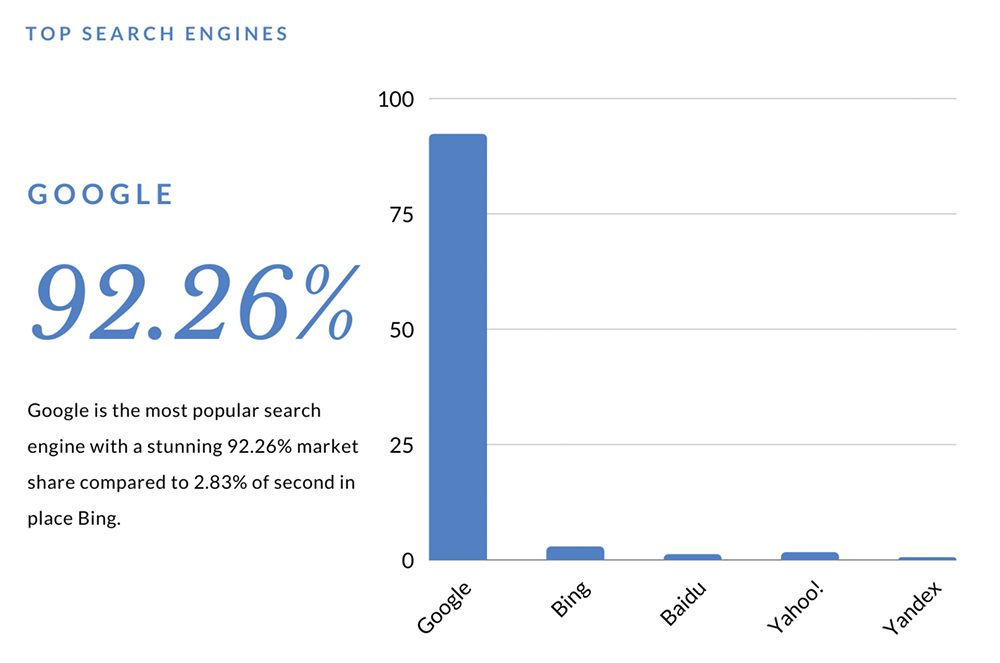Currently, Google owns 92% market share. By far, it is the most popular search engine, processing over 3.5 billion queries per day. It also has the most decisive impact on the advertising industry to date, especially for those brands and marketers who highly depend on third-party cookies for their digital marketing strategy.
Back in 2013, other popular search engines like Safari and Mozilla Firefox announced the blocking of all third-party cookie activities. Early last year, Google announced a similar action that will take place in 2022, but it has been delayed to 2023 due to an engagement with U.K. regulators over the so-called “Privacy Sandbox”.
In a blog post published last June, Google stated:
“We plan to continue to work with the web community to create more private approaches to key areas, including ad measurement, delivering relevant ads and content, and fraud detection. For Chrome, specifically, our goal is to have the key technologies deployed by late 2022 for the developer community to start adopting them. Chrome could then phase out third-party cookies over a three-month period, starting in mid-2023 and ending in late 2023.”
What are third-party cookies?
According to AT Internet: “(Third-Party) Cookies are associated with a domain name different from the page where the cookie is placed. Third-party cookies are placed by an object (an ad, for example) coming from a domain other than the one hosting the page”.
For instance, first-party cookies contain the codes of the website from where they are originated. In contrast, third-party cookies can come from different sources and domains outside of the website where these are placed. A user can easily find a third-party cookie (and its tracking code) by reviewing their browser settings.
What are third-party cookies use for?
Many businesses have depended on third-party cookies for targeting, measurement and attribution. The data coming from third-party cookies have enabled marketers to target existing or new customers, with relevant messages successfully. The data provides an understanding of consumer behaviour, such as visited websites, interest and purchase journey.
Additionally, third-party cookies also give advertisers the ability to enhance measurement for attribution capabilities, which allows for better campaign optimisation.
The rising concerns around data privacy laws are among the main reasons why third-party cookies are becoming more and more phased out. As a result, these multi-touch attribution models will become less reliable for CMO’s.
So how can businesses prepare for a marketing future without third-party cookies?
You can still rely on first-party cookies
Even though it may seem like it right now, your cookie-driven marketing strategy is not obsolete. Yes, it will require some changes this year, but businesses can still rely on first-party cookies.
Brands can use first-party cookies to track some useful data about their own website visitors, so they can provide a personalised experience every time they come back.
Additionally, brands can use third-party cookies to:
- Learn about users browsing behaviour
- Track how often users visit a website.
- Understand basic analytics about the user, which can help the marketing team formulate an effective customer segmentation.
Amazon is an excellent example of a website that utilises first-party cookies successfully. By doing so, the website remembers your login information, the language you speak and the items in your cart—all resulting in a seamless customer experience.
The privacy sandbox
The Privacy Sandbox is a new product by Google. According to Digiday, this initiative will: “curtail improper tracking while continuing to allow ad targeting within Google’s Chrome browser”.
But, what exactly is the privacy sandbox? It is a feature that will enable businesses to profit from a user’s browsing habits, relying on anonymised, cookie-less data. However, it is still in early development stages but expected to be launched later this year.
By using the Privacy Sandbox, brands will be able to target, retarget, measure and optimise users’ activity. However, data privacy is critical for Google’s Privacy Sandbox. In fact, information remaining on the user’s device and privacy compliant “is now table stakes and the gold standard for privacy”, said Amit Kotecha, Marketing Director at Permutive.
Authenticated traffic solutions
Authenticated Traffic Solutions or ATS, can gather real-time, consented user data without cookies using a technology known as IdentityLink. This empowers advertisers to offer user privacy through a single opt-out option. Your business can collect insightful consumer data while targeting your audience without third-party cookies.
The only drawback of Authenticated Traffic Solutions is the price. These systems can be quite expensive, and many start-ups and SMB’s may not be able to afford them.
Contextual targeting
While new solutions are developed to gather data and enhance the online customers’ experience, old methods are still useful. Contextual targeting is more time consuming; when done right, it can yield great results.
Contextual targeting works through PPC ads in Google. Marketers can select highly targeted keywords to show ads on relevant sites and targeting the right customer base.
Moving forward…
If your advertising efforts rely mostly on third-party cookies, we encourage you to start implementing new alternatives in your strategy. Start with a contextual marketing campaign to compare results and performance while cookies are still available. If your brand can afford it, consider using ATS before becoming a more competitive tool while the new Google’s Privacy Sandbox is finally released.
If you are looking to improve your advertising performance or consultancy on digital marketing, visit our service pages for more information, and contact us.









